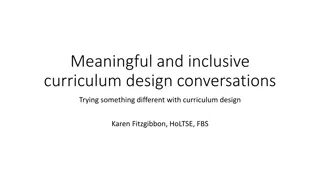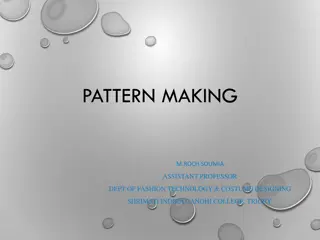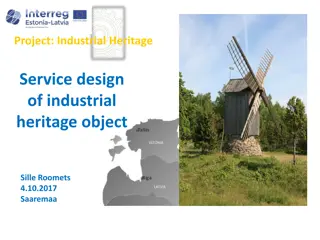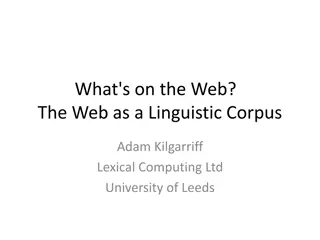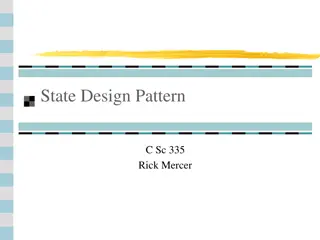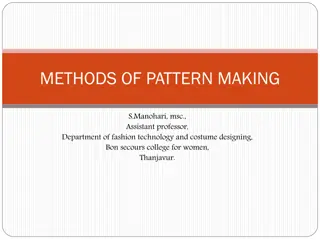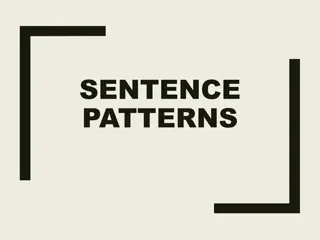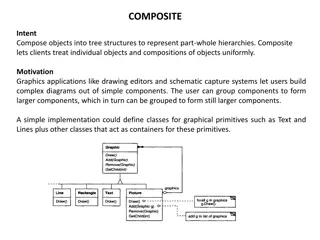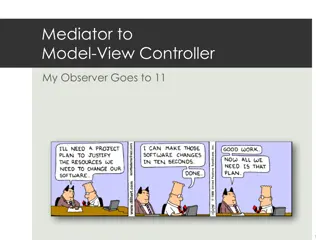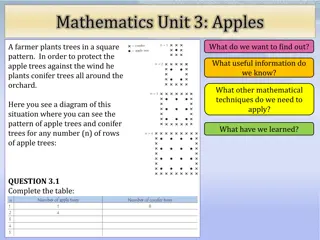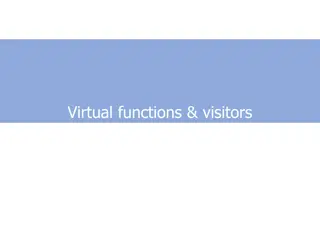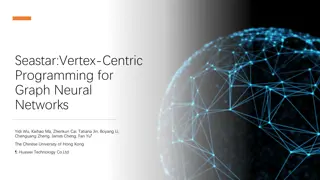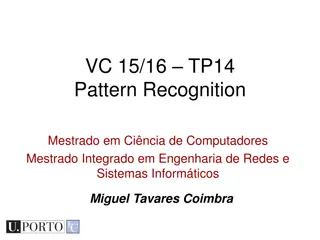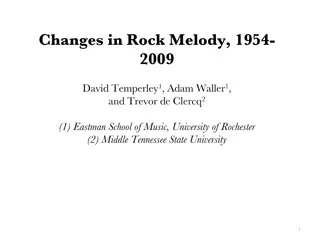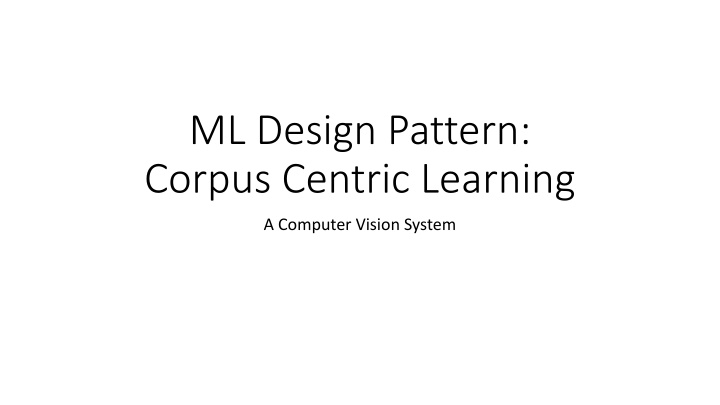
Corpus Centric Learning in Computer Vision Systems
Explore the concept of Corpus Centric Learning, its data collection and labeling process, intelligence creation, management, runtime, and its advantages and disadvantages. Dive into a case study on the potential capabilities of Computer Vision systems and the detailed processing features. Discover different methods of getting data for the product, including scripted collection, lab settings, and user feedback in various environments.
Uploaded on | 1 Views
Download Presentation

Please find below an Image/Link to download the presentation.
The content on the website is provided AS IS for your information and personal use only. It may not be sold, licensed, or shared on other websites without obtaining consent from the author. If you encounter any issues during the download, it is possible that the publisher has removed the file from their server.
You are allowed to download the files provided on this website for personal or commercial use, subject to the condition that they are used lawfully. All files are the property of their respective owners.
The content on the website is provided AS IS for your information and personal use only. It may not be sold, licensed, or shared on other websites without obtaining consent from the author.
E N D
Presentation Transcript
ML Design Pattern: Corpus Centric Learning A Computer Vision System
Corpus Centric Learning Data Collection and Labeling Process Intelligence Creation Environment Intelligence Management Intelligence Runtime Corpus Centric Data Collection Modeling Process Training Corpus Data Labeling Corpus Centric Learning useful When: Concept is stable Can t get data from usage Don t have any users Just not practical given application Privacy concerns Need to achieve high quality before initial launch Limited Telemetry (poor for training) Disadvantages: Can be expensive Labeling not always possible / as good Not set for automatic ongoing improvement
Case Study: Computer Vision Potential Capabilities: Detect People Identify People Gesture Recognition Stop Next Select, etc Facial Understanding Looking Talking Glasses, etc Gesture Models Hand Localizer Person Localizer Recognizer Sensor and Runtime Person Detector Face Localizer Face Models
Launch a thread for detailed processing Features: Pixels + Localized Points + Orientation Example of the Execution Recognizer Fast Incremental Localizer Features: Prev Pixels, Prev Points Current Pixels Person Detector Person Localizer Face Localizer Featurizer Face Tracker NOPE! Exit YEP! Face Models High efficiency (~several ms per frame) Features: Shared Featurizer Properties: - Lots of models on same data - Tight coupling between models - Difficult to close loop for labels - Privacy a serious concern Normalize: Scale and Color Crop / Renormalize Reduced Key Points High efficiency Key Points Orientation
Getting Data People working on The Product E.g. Devs in front of their computers Super biased Small Population Know how to set it up Know what it s good/bad at Script Collect the situations you want Poses Gestures Activities Hard for users to be natural while scripted May miss many user activities you didn t imagine Lab Setting E.g. Simulate the environment where it will run, bring in volunteers Somewhat biased Hard to simulate lots of environments Users in labs may not act naturally Using Product as it was intended Need enough of the product to be able to use it Users may not do the gestures / activities you want Users may be so bad at the gestures without feedback that the data is useless In Environment E.g. Give to potential users for feedback / training data before launching Can be very good data if the program is run well Careful matrix of user types and user environments Users configure the system as they want / can
Labeling Data Image (label from scratch) Frame (incremental update) Multiple Labelers Per Image - Track Efficiency - Crosscheck Accuracy x Massive Labeling Task Imagenet ~1.2M (human level) 10s of thousands (~viable level) Lable-o-tron 2072 Complete: 12 / 150,232 Agreement Index: 87% Next Person 1 Draw bounding box Draw face bounding box Mark hands Annotate face Enter properties Skin Tone Has Glasses Wearing Makeup Gesture start/end Workflow, quality checking Tedious, error prone tasks Consistency key for success 1 Image or Video Clip Data useful for many tasks Label for several at once Prepare for future Tedious job But can be fun! Helping to create an AI Contributing to a neat product Add Person Labels for all the models
Training with the Corpus Train Remaining Models Coordinate Collection / Labeling - Ensure no data overlap Full Pipeline to process training data Recognizer Person Detector Person Localizer Face Localizer Featurizer Face Tracker Face Models Training Person Detector Select Train Data / Test Data split - Ensure same person not in both - Ensure same location / lab not in both (?) - Ensure good matrix coverage in both (user types) Training Person Localizer Select Train Data / Test Data Split - Not used to train upstream models (or too optimistic) - Different users from the ones used up stream, etc Run data through upstream models / processing - Only train on images that pass through filters - Train with correct upstream normalization and labels Corpus
Evaluating this Model/Data Architecture Challenges Advantages Keeping the data straight Don t train with extra info / advantages you won t have at runtime Scaling to Teams Each model can be managed / optimized by a different group of people Coupling between models Shipping a new upstream model requires training (and testing) all downstream models Core changes (e.g. normalization) may have tradeoffs across stack Efficiency at Execution Models can be turned on or off in fine grain per scenario Features can be highly curated and shared Focus processing & tie to specific users Retraining the models May take many hours (days) to reprocess raw data and retrain complex models End-to-end could take weeks Value of Data asset can Transcend Application Labeling for future growth Assuming sensors don t change too much
Verifying Model Quality Set operating points Set for worst case not average case Glasses hardest: set based on this FPR = 10.1% FPR = 0.1% Skin Tone Per subgroup quality bar Per subgroup measure FN at target FP Ensure worst FNR at worst FPR is acceptable Makeup Glasses Age < 13 Backlight Core Userbase Finding risks Explore mistakes with a critical eye Imagine the worst thing that could happen Set up reporting and prepare to react Something you never thought of
Evolving a Corpus Based System Model Change affects Scenario success - Break 3rd party scenarios (?) - Ongoing cost to 3rd parties - Or maybe 3rdparties don t care Model Change affects Scenario success - New mistakes - Control forcefulness / frequency - Joint release to manage coupling 1st Party Scenarios Model Collection 3rd Party Scenarios API Return the minimum info needed (quantize) > Don t expose raw probabilities: - Always use threshold, keep consistent over time - May use small set of thresholds for different confidence levels > Don t expose raw locations: - Instead of per-pixel location use lower resolution grid - Hide jitter via API (don t make 3rd party smooth) Versioning depending on whose budget the models run in
Summary of Corpus Based Learning When you can collect data Stable Concepts [ Can be combined with closed loop ] Other Learnings: Model coupling must be managed Complexity in development Advantages in efficiency and team When you have to collect data No implicit labels possible Privacy a key concern Bootstrap a system s quality Verifying machine learning systems requires drilling into subpopulations Data collection & Labeling are key to success manage & invest in them Think about evolution and how you want to encapsulate information

